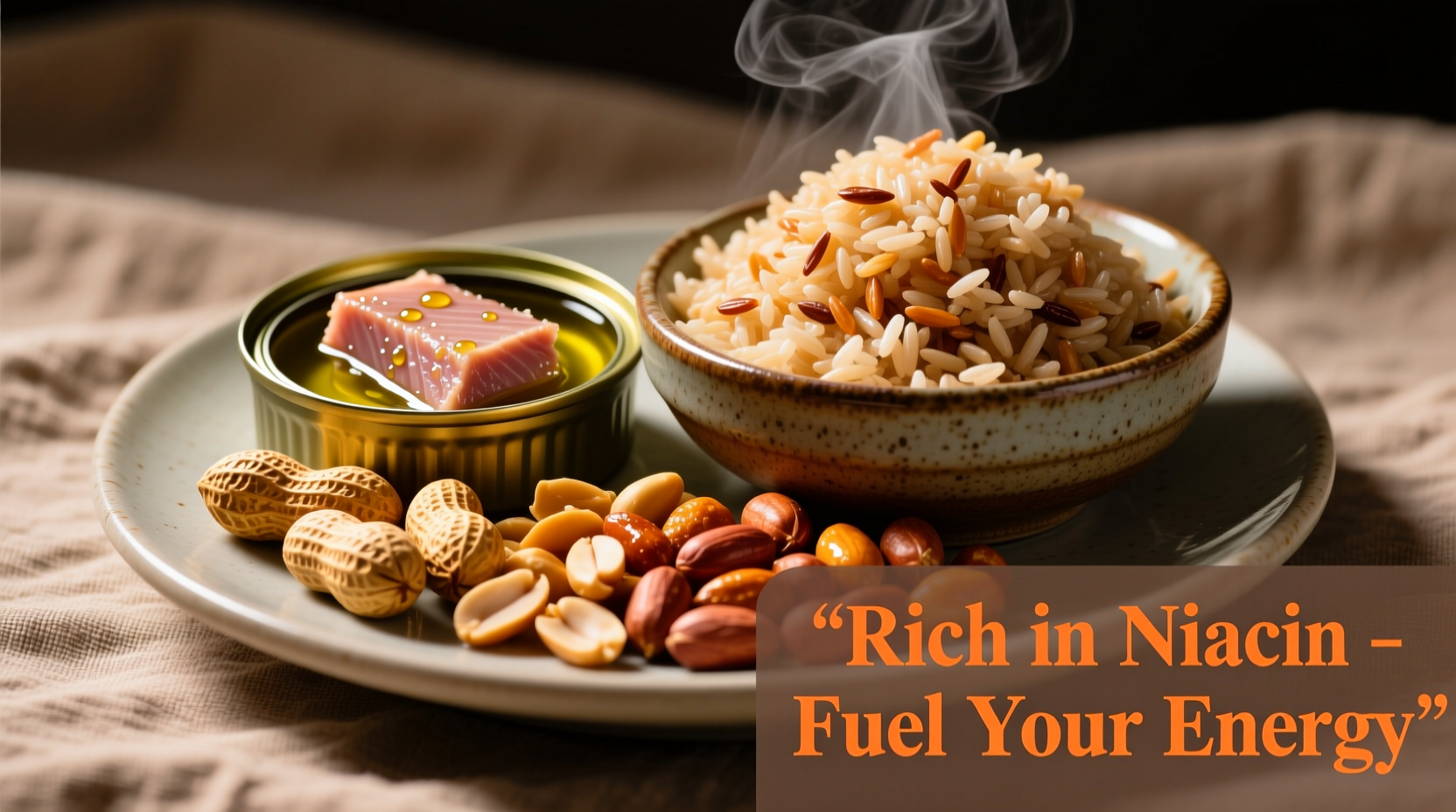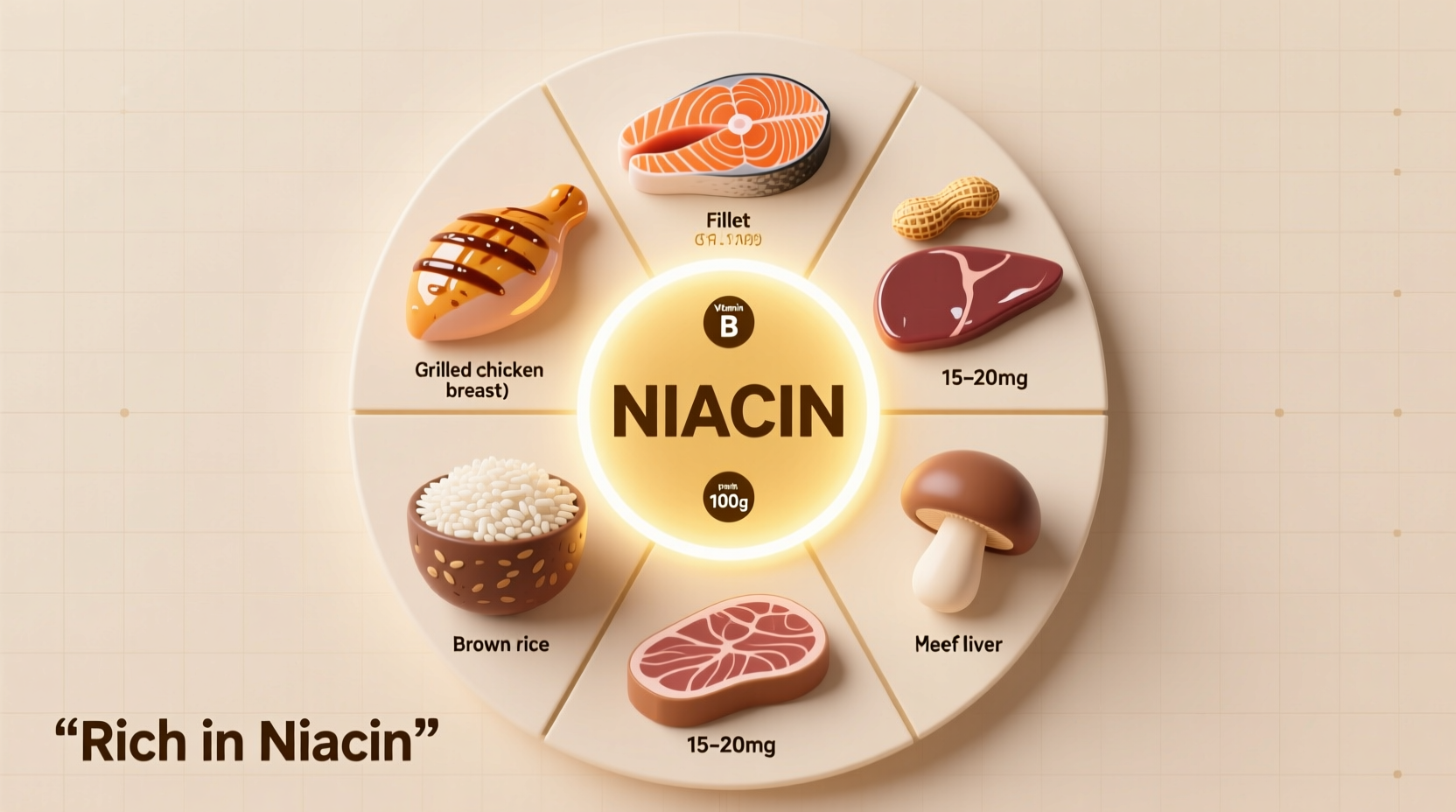If you're searching for what foods contain niacin, you'll find it in animal proteins like chicken (8.4 mg per 3 oz), tuna (11.3 mg), and beef liver (14.4 mg), plus plant options including peanuts (5.5 mg per 1/4 cup), brown rice, and fortified cereals. These natural sources provide your daily requirement of 14-16 mg of this essential B vitamin that supports energy metabolism and nervous system function.
Discover exactly which foods deliver optimal niacin levels to prevent deficiency symptoms like fatigue and skin issues. As a nutrition-focused chef with professional kitchen experience, I've compiled the most comprehensive, science-backed list of niacin-rich foods to help you make informed dietary choices—whether you're addressing a potential deficiency, following a specific diet, or simply optimizing your nutrition.
Why Niacin Matters for Your Health
Niacin, or vitamin B3, plays a critical role in converting food into energy through metabolic processes. The National Institutes of Health confirms that adequate niacin intake supports healthy skin, nervous system function, and digestive health. Adults need 14-16 mg daily, with higher requirements during pregnancy and for those with certain medical conditions.
Deficiency leads to pellagra—a condition characterized by the "3 D's": diarrhea, dermatitis, and dementia. While rare in developed countries due to fortified foods, marginal deficiency can cause fatigue, canker sores, and poor circulation. Understanding which foods contain niacin helps prevent these issues naturally.
Top Animal-Based Niacin Sources
Animal proteins consistently rank among the highest natural sources of niacin. The USDA FoodData Central database verifies these powerhouse options:
| Food (3 oz serving) | Niacin Content (mg) | % Daily Value |
|---|---|---|
| Beef liver | 14.4 | 90% |
| Tuna (yellowfin) | 11.3 | 71% |
| Salmon | 8.0 | 50% |
| Chicken breast | 8.4 | 53% |
| Turkey | 6.7 | 42% |
These values come from the USDA FoodData Central, the most current nutritional database maintained by the U.S. Department of Agriculture. Notice how organ meats like liver provide exceptional concentrations—just one serving meets nearly your entire daily requirement.
Plant-Powered Niacin Options
For vegetarians, vegans, or those seeking plant-based alternatives, several excellent niacin sources exist. While plant forms (niacinamide) have slightly different absorption rates, they remain valuable contributors to your daily intake:
- Peanuts (1/4 cup): 5.5 mg (34% DV) - The highest plant source
- Brown rice (1 cup cooked): 5.2 mg (33% DV)
- Whole wheat bread (2 slices): 3.8 mg (24% DV)
- Mushrooms (1 cup): 5.8 mg (36% DV)
- Avocado (1 medium): 3.5 mg (22% DV)
Fortified cereals often contain added niacin, sometimes providing 100% of your daily requirement in one serving. Always check labels as amounts vary significantly between brands.

Maximizing Niacin Absorption from Your Diet
Not all niacin gets absorbed equally. Research from the NIH Office of Dietary Supplements shows these practical strategies improve utilization:
- Pair with protein-rich foods: Tryptophan (an amino acid in proteins) converts to niacin in your body
- Avoid excessive alcohol: Impairs niacin absorption and increases excretion
- Cook smart: Boiling causes minimal loss compared to frying (up to 30% loss)
- Combine sources: Mix animal and plant options throughout the day for steady supply
For those following plant-based diets, combining tryptophan-rich foods like seeds and legumes with niacin-containing whole grains creates a synergistic effect that boosts your effective intake.
Dietary Considerations for Special Needs
Certain populations require special attention to niacin intake:
- Vegans: Focus on peanuts, nutritional yeast, and fortified products as primary sources
- Gluten-sensitive: Choose brown rice, quinoa, and certified gluten-free oats
- Elderly: Increased needs due to reduced absorption—prioritize animal proteins
- Medication users: Some antibiotics and cholesterol drugs affect niacin metabolism
The Harvard T.H. Chan School of Public Health notes that older adults often need 20-30% more niacin due to decreased digestive efficiency. If you have medical conditions affecting nutrient absorption, consult a registered dietitian for personalized guidance.
Practical Ways to Add Niacin-Rich Foods Daily
Incorporate these simple strategies without overhauling your diet:
- Start your day with fortified cereal (check labels for 20%+ DV)
- Add peanuts or sunflower seeds to salads and yogurt
- Choose brown rice instead of white for side dishes
- Include fish at least twice weekly (salmon, tuna, or mackerel)
- Use nutritional yeast as a cheese substitute for B-vitamin boost
These small changes can significantly increase your niacin intake without requiring major dietary shifts. Remember that variety ensures you get niacin alongside other essential nutrients for optimal health.











 浙公网安备
33010002000092号
浙公网安备
33010002000092号 浙B2-20120091-4
浙B2-20120091-4